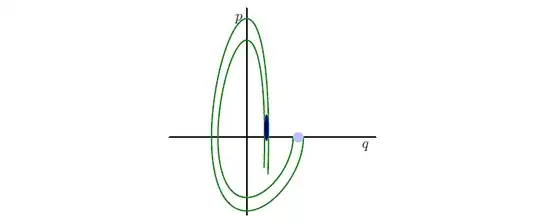I know this sounds rather insane, but it says so in my book. The argument is the following:
Given a damped harmonic oscilator $$\ddot{q}+\frac{b}{m}\dot{q}+\frac{k}{m}q=0 \tag1 $$
this system can be written in Hamiltonian form in the following way: $$H=\frac{p^2}{2m}e^{-bt/m}+\frac{kq^2}{2}e^{bt/m}$$ and using Hamilton's equations of motion it can be checked that this Hamiltonian really does give us the equation $(1)$
The argument why this is not dissipative is because of the Louville Theorem ,the system is not dissipative (so they claim) because it can be described by canonical formalism. That is, the solutions of this system are
$$q(t)=e^{-bt/2m}\Big(A\cos(\omega t)+B\sin(\omega t)\Big), \omega=\sqrt{k/m-b^ˇ/4m}$$ and $$p(t)=me^{bt/2m}\Big((B\omega-\frac{b}{2m}A)\cos(\omega t)-(A\omega+\frac{b}{2m}B)\sin(\omega t)\Big)$$
which would mean that as $q$ gets smaller, $p$ gets larger, and hence the area in phase space is conserved (as in the picture)
Since the area is proportional to $E/\omega$ and $\omega$ is a constant so is $E$!
This is obviously wrong, and there must be some hidden assumption we are not taking into account (and it probably has to to with the fact that $p$ is getting exponentially bigger with time..) What is this assumption, what is this trying to say to me, definitely not that Energy is constant in a damped oscillator, Right?